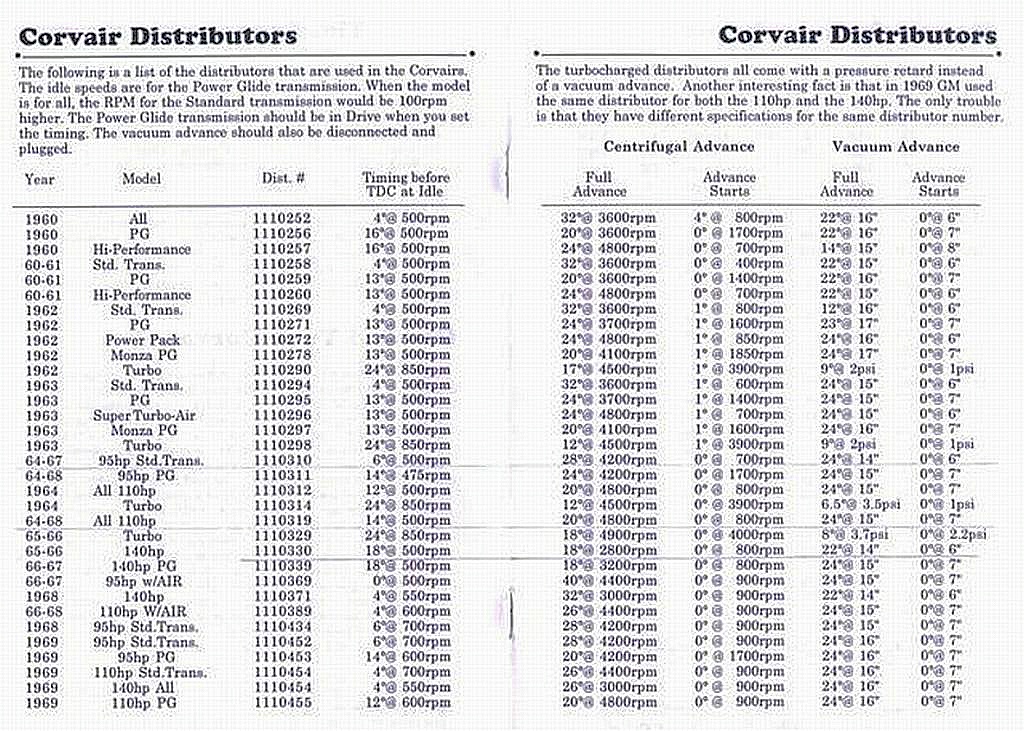
With a Powerglide automatic transmission-based Corvair, the idle speed is supposed to be set with the transmission in DRIVE — not NEUTRAL. See NOTE 4 regarding engine idle speed in the chart below.

- 1965 Corvair Chassis Shop Manual Tune-up Chart
If you set the correct idle speed in NEUTRAL, as described for a manual transmission-based engine, the engine will likely bog down and stall when shifted to DRIVE and loaded by the torque converter. The idle speed must be increased slightly to compensate for the load placed on the engine by the fluid coupling associated with the automatic transmission.
The initial mechanical setting of the idle speed screws of 1½ turns down on each side from initial contact is only a starting point. A vacuum gauge (like the Uni-Syn gauge) will accurately measure air flow through each carburetor throat, to permit more-precise synchronization of the two primary carburetors.

In addition, the final idle speed will have to be increased slightly, as described in the tune-up chart, to settle on a final idle speed in DRIVE that reliably permits engine idle when the vehicle is stopped.
REMINDER — Engine timing will affect idle speed, so it is important to properly set the engine timing before setting the final idle speed. Ensure the vacuum advance hose is disconnected and the idle is slow enough to prevent the centrifugal advance from engaging. As you can see in the distributor chart below, the centrifugal advance mechanism in most late model normally aspirated Corvairs begins to affect timing at about 800-900 RPM. The base timing setting, when checked with a timing light, must be checked with the engine idling at a speed below 800 RPM, and with the vacuum advance hose temporarily disconnected and plugged.




 1966 Corvair Corsa Convertible
1966 Corvair Corsa Convertible